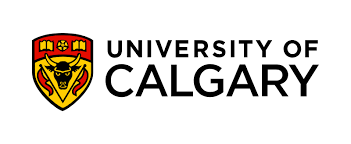Notre Dame University acceptance rate
Getting accepted into Notre Dame University is no easy feat. With an acceptance rate of just 16% for the class of 2028, Notre Dame is one of the most selective universities in the country. This exceptionally low acceptance rate is a testament to the academic excellence and prestigious reputation of the university.
In this article, we will take a closer look at Notre Dame’s highly competitive admissions process. What does it take to be part of the lucky 16% accepted? How many students apply and what is the overall yield? We will analyze admissions statistics over the past five years to identify any trends. Additionally, we will provide tips on how prospective students can maximize their chances of admission.
While the odds are steep, it is still possible to gain acceptance to Notre Dame with strategic preparation. By understanding the university’s rigorous admissions criteria, prospective students can tailor their applications accordingly. Though admission is not guaranteed, being aware of the acceptance rate trends and tips can help applicants put their best foot forward.
Notre Dame University’s acceptance application statistics over the years
- For the class of 2028 (students entering Fall 2022), Notre Dame accepted 1,673 students out of a pool of 10,407 applicants. This translates to an overall acceptance rate of 16%.
- The 16% acceptance rate for 2022 represents a slight decrease from the previous year’s 17% acceptance rate for the class of 2027. So the admission process is becoming even more competitive.
- Over the past 5 years, Notre Dame’s acceptance rate has declined steadily. In 2018, the acceptance rate was 19.7%. So the rate has dropped almost 4 percentage points in 5 years as application numbers rise.
- Notre Dame received over 11,300 applications for the first time ever for the 2022 admissions. As the university’s reputation grows, more students are applying even as acceptance gets harder.
- When accepted students are offered admission, Notre Dame has a very high yield rate. For 2022, the yield was 47% which means close to half of students accepted to Notre Dame decided to enroll.
- Factors that make admission competitive include Notre Dame’s prestigious reputation, national championship football team, alumni network, academic rigor, and Catholic mission. The university receives applications from well-qualified students across the country and world.
Gaining acceptance to Notre Dame is an immense accomplishment and with application numbers up, the admissions process is only getting more selective. Standing out takes stellar academics, test scores, extracurriculars, and compelling application essays.
Early action admission to Notre Dame along with relevant dates.
Applying early for admission into this institution is a great way to maximize your chances of admission to Notre Dame’s exceptionally selective applicant pool. The early action deadline is November 1st, with decisions released in mid-December. This provides students the opportunity to demonstrate interest in Notre Dame and receive an admissions decision well in advance of the regular decision notification in late March.
The key advantage of early action is that it communicates to the admissions committee that Notre Dame is one of your top choice schools. While early action is non-binding, meaning you don’t have to commit to attending if accepted, it shows the university that you are seriously interested in being a part of the incoming class. This can give your application a boost during the highly competitive review process.
I strongly encourage you to complete Notre Dame’s early action application by the November 1st deadline if you feel it is one of your top choice schools. This will maximize the likelihood that your impressive credentials capture the attention of admissions officers reviewing the smaller early applicant pool. While nothing can guarantee admission to such a selective university, applying early action can help demonstrate your enthusiasm for Notre Dame and passion to be part of the community.
With strategic preparation and putting your best foot forward in the early action application, you can hope to be among the elite group of students who receive that coveted early action acceptance letter in December. It’s the first step toward joining Notre Dame’s distinguished student body.
Requirements need for admission to Notre Dame University.
Having known the acceptance rate of this great institution. Here is what you needed to undertake to get admitted into the school.
- Academics: Notre Dame seeks students who have challenged themselves with rigorous coursework. This includes taking honors, AP, IB or advanced courses in subjects like math, science, English, foreign language, and social studies. Strong academic performance with a competitive GPA is expected.
- Test Scores: Submission of SAT or ACT scores is optional, but competitive scores can strengthen an application. The middle 50% SAT score range for admitted students is 1420-1550. ACT composite scores in the middle 50% range fall between 33-35.
- Extracurricular Activities: Notre Dame wants well-rounded students who are engaged outside the classroom. Quality over quantity is key for extracurriculars. Sustained involvement and leadership in a few activities is better than scattered commitments.
- Letters of Recommendation: Applicants must submit one teacher recommendation letter and one counselor letter. Letters should speak to the student’s character, academic abilities, and potential for success at Notre Dame.
- Essays: The essays require self-reflection and reveal the applicant’s personality, values, and motivation for attending Notre Dame. Creativity is welcome but appropriate to the prompts.
- Interview: An interview is strongly recommended but not required. It provides an opportunity to connect personally and convey fit for the Notre Dame community.
To maximize chances of admission, students should aim to exceed expectations across all requirements, present a compelling application theme, and highlight the unique contributions they can make to Notre Dame.
GPA requirements for admission to Notre Dame University:
The requirements for GPA are as follows:
- The middle 50% GPA range for admitted students is 4.0-4.3 on a traditional 4.0 scale. This means half of admitted students had a GPA between 4.0 and 4.3.
- To be a competitive applicant, it is recommended to have an unweighted GPA of at least 3.9 or higher. The higher the better to stand out.
- Weighted GPAs of accepted students, which include extra points for honors, AP, and IB courses, often exceed 4.30. Competitive weighted GPAs are in the 4.40-4.60 range.
- ND also considers academic rigor when evaluating transcripts. Taking the most challenging courses available at your high school – and excelling in them is advised.
- All academic classes are included in the GPA calculation, including arts, humanities, math, sciences, language, and electives. There are no exceptions.
- While an upward grade trend is positive, consistently earning A grades over 4 years remains the ideal. GPAs with declines may raise concerns.
- To maintain the GPA, avoid class withdrawals when possible. Valid extenuating circumstances are understandable.
- Since freshman year contributes to cumulative GPA, strong performance from day one is recommended.
In today’s ultra selective admissions climate, a high GPA alone does not guarantee admission but falling below ND’s competitive GPA range can be disqualifying. The academic bar is set very high.
SAT and ACT requirements and considerations for admission to the University of Notre Dame:
Outlined here are the:
- Sat requirements.
- ACT requirements.
SAT requirements.
SAT scores are optional – students can choose whether to submit them.
- Middle 50% score range for admitted students: 1420-1550 out of 1600.
- Competitive scores meet or exceed the 75th percentile of 1550.
- Middle 50% on Evidence-Based Reading and Writing: 720-770/800.
- Middle 50% on Math: 700-800/800.
- Notre Dame “super scores” the SAT, taking the highest section scores across dates.
ACT requirements.
- ACT scores are optional as an alternative to the SAT.
- Middle 50% composite score range: 33-35 out of 36.
- A competitive score meets or exceeds the 75th percentile of 35.
- Middle 50% on ACT English: 34-36/36.
- Middle 50% on ACT Math: 31-35/36.
- Middle 50% on ACT Reading: 34-36/36.
- Middle 50% on ACT Science: 33-35/36.
- Notre Dame will “super score” the ACT, using your highest section scores.
While test scores are optional, competitive scores can strengthen your application. Submit your best set of scores to demonstrate academic readiness. Scores are considered in the context of the full application.
Deadline for Notre Dame University admission.
Early Action details and deadlines
– Application Deadline: November 1
– Decision Notification: Mid-December
Regular Decision
– Application Deadline: January 1
– Decision Notification: Late March
Early action is recommended for students who consider Notre Dame a top choice, as it can give a slight advantage in admission. The early action application deadline is November 1, with decisions released in mid-December.
The regular decision deadline is January 1 if not applying early action. Admission decisions are then sent out in late March.
Some other important dates:
Financial Aid Application Deadlines:
– Early Action: November 1
– Regular Decision: February 15
Deposit Deadline
– May 1 for admitted students to confirm enrollment
While regular decision is also competitive, applying early action by November 1 allows ample time to make Notre Dame your strongest application possible. Meeting deadlines is crucial, as late applications are generally not considered.
Overview of the admissions process at the University of Notre Dame.
- Notre Dame accepts the Common Application along with their own supplement. Students complete both parts for a complete application.
- Main components include academic info, extracurricular activities, essay responses, letters of recommendation, and optional SAT/ACT scores.
- Review – Applications are holistically reviewed by admissions officers based on academic merit, extracurricular engagement, essay quality, and overall fit for Notre Dame.
Note – The office seeks intellectually curious students who will contribute diverse talents and perspectives to the student body.
- Interviews – Interviews are strongly recommended but not required. They allow applicants to make a personal connection and address anything not covered in the application.
- Interviews are conducted by Notre Dame alumni volunteers across the country. Virtual options are also available.
Link to the University of Notre Dame’s undergraduate admissions website:
On this website you can find information about:
- Applying to Notre Dame – overview of the application requirements, deadlines, and process.
- Academics – details on academic programs, student resources, faculty, and research.
- Student Life – insight into campus culture, activities, athletics, housing, and dining.
- Financial Aid – guidance on affordability, scholarships, grants, loans, and work-study.
- Visiting Campus – resources to plan a campus tour and explore the Notre Dame community
Conclusions.
Notre Dame University is one of the most selective universities in the United States, typically accepting around 20% of applicants each year. Based on the most recent data available, Notre Dame’s acceptance rate dropped to 16.7% for the class entering in Fall 2023. This marks one of the lowest acceptance rates in the university’s history.
Such an exceptionally low acceptance rate reflects Notre Dame’s prestige as a top-ranked national university. It indicates that admissions to Notre Dame is highly competitive, with the university able to be very selective about the students it chooses to admit. The low acceptance rate is likely driven by Notre Dame receiving far more qualified applicants than they have space for in each new class.
Moving forward, we can expect Notre Dame’s acceptance rate to remain very low, probably fluctuating in the 15-20% range annually depending on the applicant pool. The takeaway is clear: gaining admission into Notre Dame requires standing out from the crowd academically, athletically, and personally. The university has the luxury of choosing only the very top students from a large pool of exceptional applicants.






